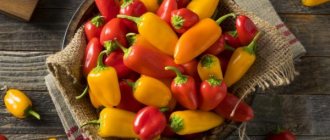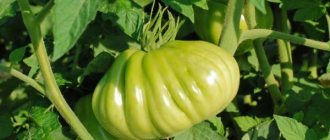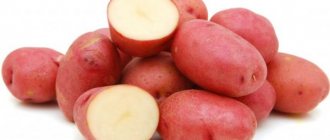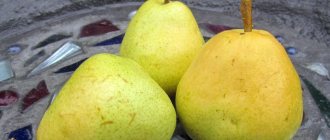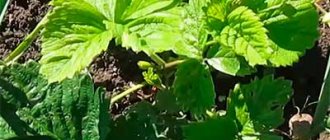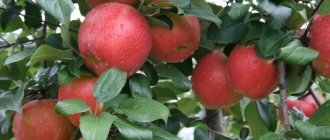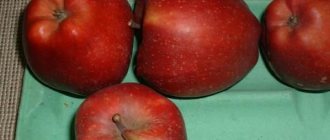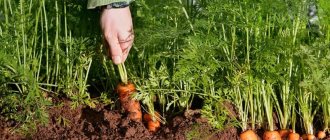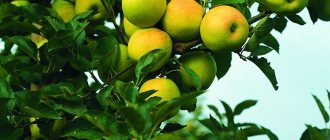Early varieties
What are the ripening dates for figs? Like any fruit-bearing plant, it is divided into early, middle and late varieties; less often, the category of ultra-early ones is distinguished.
Brogiotto nero
| |
Dalmatian or Turkish white figs
| |
Brunswick figs
|
Where in Russia can you grow figs?
This seems impossible, but it is quite possible to cultivate a subtropical crop quite successfully in our northern climate and, despite the severe winter frosts, it will produce a good harvest. This requires only the correct agricultural technology.
Where figs grow wild, with an average daily temperature of +10 °C over the entire growing season, the sum of temperatures reaches +4000 °C. With such indicators, the harvest will be abundant and stable. Therefore, when cultivating crops on your own, it is important to provide the same conditions using the trench method.
Under certain conditions, with mandatory shelter for the winter, you can plant a fig tree in central Russia. Although in the Caucasus and Crimea it is found growing wild. In the Krasnodar Territory, in October-November, fig trees require special greenhouse conditions to survive the winter.
In regions with a sharply continental climate, the crop is grown in winter gardens and greenhouses. Figs bloom 2-3 years after planting. It produces high yields from 7-9 years of age. The culture is propagated by seeds, cuttings and layering.
How to choose a place for figs in the garden?
To understand how harmoniously this tree will combine with other plants on your site, preview a photo of an adult fig.
When choosing a specific planting site for this crop, consider the following requirements:
- Well lit space.
- No wind blowing.
- It is advisable to face the south side relative to the house in order to provide the most comfortable conditions for the development of figs in relation to the amount of solar heat.
- The depth of groundwater is no more than 2.5-3 meters.
- Flat surface of the site or gently sloping hill.
Important! Areas located in places where cold air accumulates - lowlands, floodplains, ravines - are absolutely not suitable for growing figs.
Dates for planting figs
Considering that figs love warmth very much, they need to be planted only in the spring so that they have time to take root properly before the first cold weather, otherwise the plant will die. Experienced gardeners identify exact planting dates, namely March 15-30, immediately after the start of warming and snow melting.
Purchase of planting material
When buying fig seedlings, it is better to choose two-year-old specimens with a pair of side shoots. The older the seedling, the more difficult it is for it to take root; the adaptation period is much longer. Seedlings with damaged roots or shoot bark should be discarded. There should be several buds on the shoots.
Reproduction methods
Propagation by cuttings . To obtain seedlings of this exotic fruit plant, you can use:
- green cuttings;
- lignified cuttings.
Green cuttings are cut immediately before planting from a suitable adult fruit-bearing plant. They should be used as ripe lower branches, which have at least 3–4 buds.
The length of the cuttings should be from 10 to 15 cm, the upper cut is made straight, and the lower cut at an angle, and several shallow longitudinal grooves are cut above it - this will help the roots form faster. After cutting, the cuttings are slightly dried until their milky sap hardens, and then placed in a heteroauxin solution for 12 hours.
At the same time, an earthen mixture is prepared in which the cuttings will be planted. It undergoes a steaming procedure for disinfection to eliminate the risk of rotting or mold formation. After this, you can proceed to planting cuttings. This is done as follows:
- Their ends, where roots should form, are dipped in ashes, placed in paper cups and sprinkled with the prepared earthen mixture.
- The planted cuttings are covered with film, periodically watered and sprayed.
- After the buds begin to grow on them, the cuttings will need to be taught to live without shelter.
The optimal air temperature in the room where green fig cuttings are grown will be +22 degrees. If everything was done correctly, in about a month they will form a root system, and the resulting seedlings can be planted in the ground.
Unfortunately, it is not always possible to cut the green stalk of a fruiting fig. Therefore, in order to grow a fig tree in your own garden, you use lignified cuttings. They are harvested in late autumn and sent for storage until spring. You can store them either in damp sand in a warm cellar, or simply bury them in the ground, after wrapping them in cloth and covering the tubercle with film to prevent excess moisture from getting into them.
Propagation by seeds . A more complex and time-consuming way to propagate figs is to grow a tree from seeds. This planting material is taken from ripe fruits. They should be thoroughly washed with water and dried for 24 hours.
Seeds are planted in prepared soil in early spring to a depth of no more than 3 cm and carefully watered with a sprayer. Before the first shoots appear, the container with seeds planted in the ground should be covered with polyethylene. And when the first shoots appear on the surface of the earth, the polyethylene will need to be periodically opened in order to give the young plants the opportunity to breathe and get used to the environment.
After the sprouts are well established, they are transplanted into paper cups. There they continue to grow and develop, and around the beginning of May they can be transplanted into open ground, first under film, to give them the opportunity to adapt to a new place. It will be possible to replant figs from seeds to a permanent place in about 2 years. By this time, a strong and healthy seedling should have formed.
Figs reproduce quite quickly by root shoots, which are abundant in low-growing varieties. It is enough just to carefully dig up the root, separate part of it and transplant it to a previously prepared place. You can also use young shoots, so-called layering. Bend the selected shoot, cover it with soil and water it. And after its root system has formed, dig it up and replant it in a permanent place.
Varieties of Figs
In this variety, the fruits do not ripen all together, and therefore fruiting stretches from June to October. The yield is high, up to 80 kilograms of berries from one bush. The height of the bush reaches 3 meters. The variety loves warmth and requires shelter for the winter. It takes root well in Crimea.
In total there are more than 1000 plant varieties. During the fruiting period, it is strewn with fruits of different sizes and shapes, colors and tastes. These parameters vary depending on the plant variety. Both their yield and the timing of fruit ripening differ. I propose to consider the most famous types of Figs below.
Crimean Black
This variety of European origin belongs to the self-fertile and early-fertile species; it can be grown in open ground with shelter. A tree up to 3 meters high bears fruit twice – in July and early autumn. Achieving high yields allows you to:
- pruning;
- crown formation.
The first harvest is fruits weighing about 80 g, the second time they grow smaller, have a black-purple peel, and taste sour.
Dalmatian
A self-fertile variety that produces a harvest twice a season. The first time the fruits are large, weighing up to 180 g. They are pear-shaped and have a gray-green skin color. Inside the fruit there is sweet, sour, reddish pulp. The bushes produce a good harvest from the third year of life.
Since the Dalmatian Fig tolerates temperatures down to -15 degrees, it can be considered frost-resistant. It is the best among other varieties in terms of taste characteristics.
This crop variety bears fruit 2 times a season:
- the first time at the end of August;
- the second time - in early November.
By this time, elongated brown-purple fruits appear on the trees. Inside they have juicy, sweet, red-orange flesh. The average weight of the fruits of the first harvest is 80 g, the second – 50 g.
Brunswick
A variety that is considered the most frost-resistant, because it can withstand air temperatures down to -27 degrees.
It is a self-fertile tree that bears fruit twice a year. The first time, a small number of large fruits weighing about 200 g appear. The second time, smaller figs grow. They are pear-shaped and their skin has a characteristic light green hue. Inside the fruit you can see raspberry, juicy and tasty pulp.
Brunswick figs are distinguished by their large growth; to adjust the size, the bush is pruned at the level of 2 meters. At the 5th year of life, it is pruned at the root to ensure good productivity in the future.
Kadota
A self-pollinating and early-fruiting variety, its fruits grow twice a season. They have a pear-shaped, slightly rounded shape and are distinguished by a light green tint. Their average weight is 60 g. Inside the fruit there is bright pink, sweet pulp.
The culture is characterized by good transportability over long distances. It is considered frost-resistant, because it can withstand temperatures down to -10 degrees, and with further cooling it needs shelter.
White Adriatic
This self-fertile variety was bred in the Nikitsky Garden; it does not require additional pollination and bears fruit twice a season. The fruits are different:
- oval shape and flat top;
- weighing up to 60 g;
- pink, sugar pulp;
- yellow-green peel.
The crop is resistant to gray rot, its fruits are well preserved due to their thick skin.
San Pedro Black
An ancient self-fertile species native to Spain. The fruits of the tall tree are distinguished by the shape of an oblique egg and are up to 10 cm in diameter.
The fruits are distinguished by their sweet pinkish flesh and almost black skin. They appear twice a season.
Honey
A self-fertile variety, which is one of the sweetest varieties. It is different:
- low size;
- heat-loving;
- unpretentiousness to the composition of the soil.
The fruits of the bush are distinguished by a light green shade of the peel. They do not appear all together, so the harvesting process continues from June to October. From one bush up to 3 m high you can get up to 80 kg.
Figs: description and reviews
Varieties that are relatively resistant to frost include:
- Sochi 7. Good yield, fruit weight reaches 50 g, the berries have a pleasant, slightly sour taste.
- Nikitsky. The plant is partially self-fertile, mid-ripening, the fruits are sweet and sour, large.
- Dalmatian. One of the best table varieties (description above).
The most problems arise when growing figs in winter. The main task is to preserve the trees and prevent them from freezing, so amateur gardeners most often share their experience in preparing frost-resistant fig varieties for winter. In their reviews they recommend:
- plant the plant in places protected from the wind and form it correctly;
- before the onset of winter, the soil in the root part of the plant should be dry, and the roots themselves should be moist;
- Make the shelter breathable so that fungal diseases do not appear, and during thaws there is ventilation.
Large-fruited varieties
White San Pedro or White Royal Fig
|
Now let's look at the varieties of figs for a number of other important characteristics.
Planting and caring for figs in open ground
Landing . A three-dimensional hole is dug, 80x80x100 cm, where 100 cm is the depth. Figs have a rapidly growing root system; to prevent its growth to the detriment of the above-ground part of the plant, it is recommended to install limiters in the ground. The easiest way is to line the walls of the pit with bricks.
Good drainage is necessary, so crushed bricks, medium-sized expanded clay or small stones are placed at the bottom. The drainage layer should be from 20 to 30 cm, no less. The soil mixture is prepared as follows:
- garden soil - 2 parts,
- bone meal – 1 part,
- rubble stone or crushed stone - 1 part,
- dry fertilizer (mineral complex) – 300–500 g, depending on the manufacturer’s recommendations.
All ingredients are thoroughly mixed, and part of the resulting mixture is placed in the pit.
The tree is planted in a hole in a certain way, tilted 37-40 degrees towards the south, and the rhizome directed towards the north. In the future, it will be easier to bend the branches to the ground and cover the plant for the winter. Also, for convenience, when growing several specimens, it is recommended to dig trenches rather than holes, and plant the plants in a row.
Next, the seedling is sprinkled with earth, the soil is compacted and watered. One fig tree uses about 4 garden buckets of warm water. At the end of the work, it is recommended to immediately cover the ground around the seedling with a layer of mulch, using cut grass, sawdust or wood shavings.
Watering . Watering will depend on the age of the tree. Young growth should be watered weekly, adding 5 to 10 liters of water under the tree. The next season, when the root system is formed, the tree needs to be watered once every two weeks, adding about 10 liters of water under it. When the fruits ripen, you should not water the fig tree. The last watering is carried out after harvesting to increase the wear resistance of the crop. After moistening the soil, it is necessary to loosen it and remove weeds.
Feeding . The tree should be fertilized at least twice a month. At the beginning of the growing season, it is necessary to use nitrogen fertilizers. In mid-summer, phosphates will be required as they promote fruit set. At the end of the growing season, potassium fertilizers should be applied. They will allow the figs to ripen better and faster. Every month the tree must be fed with microelements and fertilizers to help it develop normally.
Twice a month, outside root feeding should be done by spraying the figs with a nutrient solution. Organic feeding is also important for the fig tree, in the form of humic acid, microorganisms and soil. Fertilizing should be done only after watering to avoid burns to the roots.
What kind of crop is this - figs?
The deciduous fig tree belongs to the genus Ficus, or more precisely to the Mulberry family. The birthplace of this unusual plant is considered to be one of the mountainous provinces of Asia Minor called Caria.
According to the latest data from archaeologists, figs became one of the first plants that people began to specifically cultivate for their needs. Recent findings indicate that this happened a whole thousand years earlier than cereal plants appeared in culture. Domesticated fig trees were grown 11–12 thousand years ago in Arabia, in the Jordan Valley. From there, the wineberry spread throughout Syria and Egypt, and in the 16th century even reached America.
Now figs are grown not only on the Arabian Peninsula, but also along the shores of the Black Sea (in Crimea, Abkhazia and the Krasnodar Territory). This culture is popular in Georgia and Armenia, in Azerbaijan (on the Absheron Peninsula) and in the Carpathians.
Nowadays, gardeners have more than a thousand varieties of figs at their disposal, which differ from each other in several parameters:
- number of harvests (one or two per season);
- terms of ripening (early, middle or late);
- size and color of figs;
- purpose of the crop (technical, dried fruit and dessert varieties);
- type of pollination (Smyrna, which requires pollination by a blastophagous wasp, or Mediterranean, which forms fruits parthenocarpically).
In suitable mild climatic conditions, it is not at all difficult to grow figs, since they are unpretentious, are not afraid of pests and diseases, and produce a stable yield of fruits. In areas with cooler weather, you can only harvest wineberries in a greenhouse or on a windowsill at home, for which only self-fertile forms of the plant are suitable.
Early ripening varieties require only 80 days to ripen. Medium and late varieties will require from 100 to 130 days to achieve full ripeness. Individual representatives of the crop can bear fruit repeatedly, and then another harvest can be harvested starting in August.
Kadota figs are good for preparations
This self-pollinating variety has gained particular popularity in California. Later it spread to many countries around the world. Refers to self-fertile and early-fertile varieties. The fruits reach a weight of 60g. The shape of the fruit is pear-shaped, slightly rounded, light green in color. The fruit pulp is bright pink, juicy, sweet. The variety is easily transported over long distances.
The fruits tend to wilt directly on the tree and are good for jam, jam and drying.
Did you know that regular consumption of figs paralyzes the proliferation of cancer cells and promotes retinal regeneration? But it is not recommended for diabetics, patients with metabolic disorders and obesity, because the fruit has a high sugar content.
Crimean black - unpretentious and high-yielding
Scientists at the Nikitsky Botanical Garden distinguish the variety from other specimens by its European origin. Refers to early-fertile and self-fertile varieties. Crimean black figs produce crops twice a year. When caring for trees, it is recommended to pay special attention to pruning and crown formation. The variety responds well to this procedure and produces a high yield every year.
When caring for trees, it is recommended to pay special attention to pruning and crown formation
The ripening time is extended. The fruits of the first harvest are medium-sized round figs. The second harvest is characterized by smaller black fruits with a purple tint. The taste of the fruit is sour, which makes the variety unique and in demand. Great for making jam and drying. Crimean black is perfect for planting in open ground covering structures.
Pink fig tree
The fig variety Sabrucia rosea bears fruit without pollination, is a winter-hardy tree, can withstand frosts down to -18 degrees, and produces two harvests per season. The first is called winter because the ovary forms in the fall and, with good shelter, is perfectly preserved until the spring warmth. In July these fruits ripen. And at the very beginning of June, in place of the new growth, a second harvest is formed, the fruits of which ripen in September.
Large berries with a diameter of 5 to 6 cm and a length of up to 10 cm have a pear shape and excellent taste. The skin is grayish-pink in color, and the flesh is the color of strawberries. A fully ripened fig fruit is sweet and aromatic. The tree should be grown in trenches and covered with insulation for the winter in order to obtain a July harvest. For the autumn harvest, it is enough to cover the base with soil, pull it together and wrap the tree with material. Berries picked after drying have a rich aroma and are very sweet, while berries picked after yellowing of the peel are less fragrant and of moderate sweetness, but are stored longer.
The sweetest varieties
Sugar Celeste is a large-fruited, mid-ripening fig that forms tall trees that bear fruit twice a year and are not afraid of cold winters. Very sweet, pear-shaped figs are covered with a delicate skin that combines yellowish-green and purple colors. They are remarkably good fresh and are great for drying and all types of processing. The variety is partially self-fertile.
Read also: The best variety of remontant strawberries
Strawberry is a high-yielding mid-season variety. It forms partially self-fertile, tall and strong trees that can withstand winter cold well. Medium-sized pear-shaped fruits with an exquisite taste of very sweet, aromatic pulp ripen in the second half of August. They have a wide range of uses: from fresh consumption to drying or making preserves, jams, and marmalade.
Honey is a mid-season, self-fertile and low-growing (up to 2 m in height) white fig. The variety produces very productive, spreading and heat-loving trees that are not demanding on soil composition. The light green fruits are distinguished by their extraordinary sweetness, which is clear from the name. This variety can bear fruit without problems indoors.
The most worthy mid-season and late representatives
Crimean black is a mid-season, high-yielding variety of domestic selection. This self-fertile fig is capable of bearing fruit twice per season: in July and September. The pot-bellied, pear-shaped fruits of breba are of medium size (up to 80 g), and the main harvest is small (up to 40 g). They are covered with dark purple skin, and the bright raspberry-red flesh delights with a pleasant, slightly sour taste. Medium-sized and early-fruiting trees respond well to formative pruning. The variety is perfectly suited for growing in shelter, as well as as a potted crop on a balcony or enclosed veranda.
Sabrucia rosea is a very popular mid-ripening early-fruiting variety on the Black Sea coast of the Caucasus, producing only one, but very abundant harvest per season. The trees are distinguished by good self-fertility. Large (up to 130 g) rounded pear-shaped figs have a very attractive appearance. They are covered with dark pink skin, and the light raspberry pulp has a delicate, dessert taste.
Temri (Abkhazian purple) is a mid-late fig originally from Tunisia, but is now widespread on the Black Sea coast of the Caucasus. The variety is partially self-fertile and very productive. Medium-sized trees bear their first fruits at the end of August and continue to bear fruit until November. Slightly ribbed, egg-shaped figs covered with purple-burgundy skin are medium in size (up to 75 g) and have a very sweet taste. Temri figs are valued for their high commercial properties and resistance to cracking.
Kadota is a popular mid-late, self-fertile variety of American selection. Trees of moderate height are capable of producing two abundant harvests per season and are characterized by early fruiting. The size of the breba fruit is about 70 g, the main harvest is up to 60 g. Kadota figs have an interesting feature - they are able to wilt while still on the tree. The ovoid fruits under the dense skin of an olive hue hide the pinkish-coral pulp of a very pleasant, dessert taste. The variety is universal in use and has high commercial qualities.
Date Neapolitan is a medium-late, single-harvest fig that ripens in the second half of September. The variety of Italian selection is distinguished by the excellent taste of medium-sized fruits (up to 50 g). Vigorous trees form pot-bellied pear-shaped figs with a long and thick neck. The burgundy-purple skin hides the tender, buttery flesh of a deep crimson hue.
